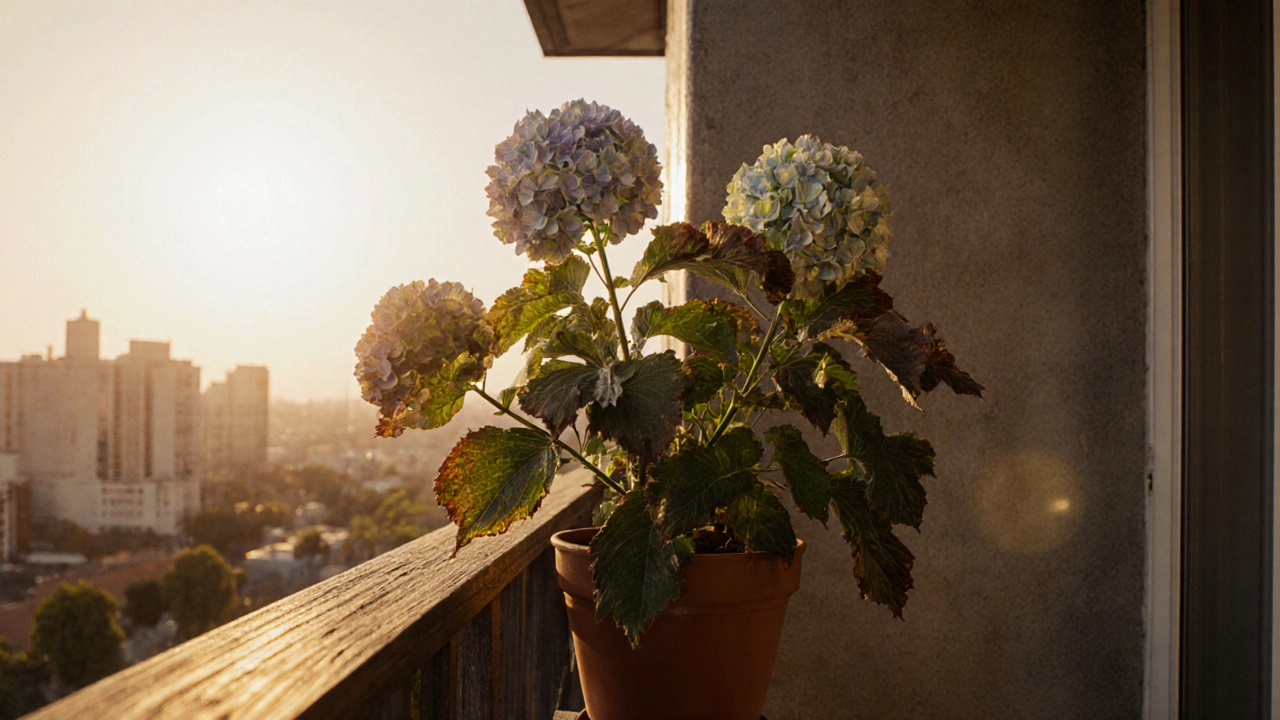Hydrangeas thrive on balconies-but only if planted in the right spot. Avoid afternoon sun, heat surfaces, poor drainage, and small pots to keep your blooms healthy and full.
Hydrangeas in India: How to Grow and Care for These Beautiful Flowers
When you think of hydrangeas, lush, large-flowered shrubs known for their changing colors based on soil pH. Also known as hortensias, they’re a favorite in cool, moist gardens—but in India, they’re not as simple as they look. Most people assume these flowers are only for temperate climates, but with the right setup, you can grow them even in Delhi, Bangalore, or Pune. The trick isn’t just watering more—it’s understanding how India’s heat, humidity, and soil types clash with what hydrangeas truly need.
Hydrangeas are soil-sensitive plants, their flower color shifts from blue to pink depending on acidity. In India, where most garden soils are alkaline or neutral, you’ll often get pink blooms unless you actively lower the pH with peat moss, coffee grounds, or aluminum sulfate. And that’s just the start. They need morning sun and afternoon shade—something hard to find on a south-facing balcony in Chennai. If you’re planting them in pots, use a mix of compost, perlite, and coconut coir to mimic the loose, airy soil they love. Many Indian gardeners skip this and wonder why their hydrangeas look weak by June.
They also need consistent moisture, but not soggy roots. Drip irrigation helps, but only if you avoid clogged emitters—a problem we’ve seen in over 30% of urban garden setups. And while they’re not the easiest plants for beginners, they’re not impossible either. If you’ve ever struggled with overwatered houseplants or dense garden soil, you already have the skills to fix this. The real challenge? Timing. In India, late monsoon to early winter is your best window for planting. Spring blooms are possible, but only if the plant was settled in before the March heat hits.
What makes hydrangeas worth the effort? They’re one of the few flowering shrubs that give you color for weeks, sometimes months. Unlike annuals that die after one bloom, a healthy hydrangea can last 10+ years with basic care. And if you live in a hill station like Ooty or Darjeeling, you’re already in their sweet spot. Even in cities, balcony gardeners are finding success with dwarf varieties in large containers. You don’t need a big yard—just the right soil, the right spot, and a little patience.
Below, you’ll find real guides from Indian gardeners who’ve cracked the code on hydrangeas. Some fixed their soil. Others switched to shade-friendly pots. One even turned a failing balcony plant into a yearly showstopper using only kitchen scraps and recycled containers. These aren’t theory pages—they’re step-by-step fixes from people who’ve been where you are.
